Bell H-13 Sioux — The Korean War MASH Helicopter
June 22nd, 2024
7 minute read
For many people growing up in the 1970s and 80s, the TV show M*A*S*H was the definitive story of the Korean War. And the Bell H-13 Sioux, the so-called MASH helicopter, was the angel of the battlefield bringing wounded men to the skilled medical care of B.J. Hunnicutt and Hawkeye Pierce. In today’s article, Dr. Will Dabbs — a former Army aviator himself — takes a look at this early medevac helicopter.
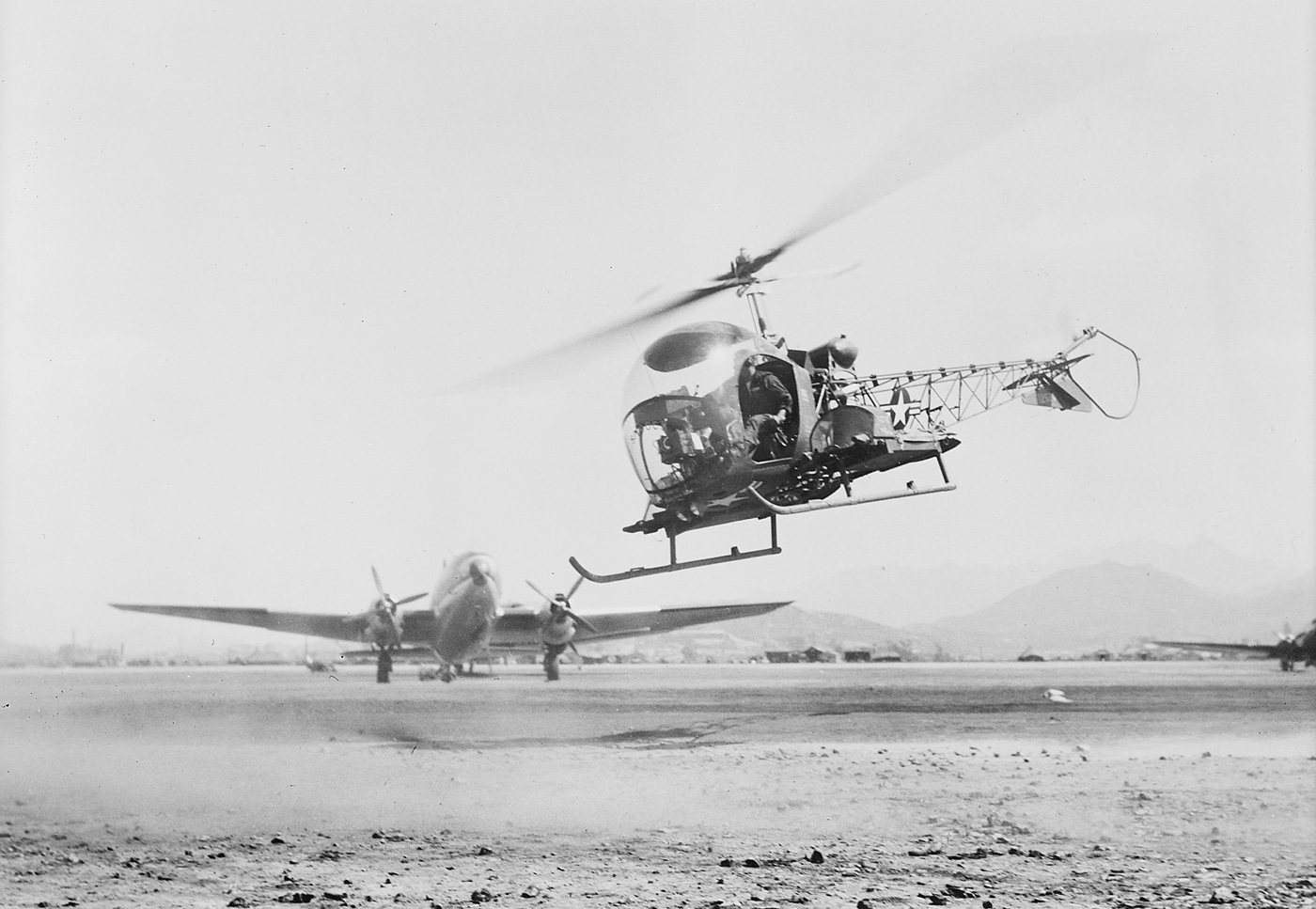
When I flew helicopters for Uncle Sam, it was obvious the Army had invested a fair amount of effort into keeping me alive. Modern tactical helicopters feature self-sealing fuel tanks, redundant hydraulic systems, and boron carbide armor plate around the pilots’ stations. If we had to take those big machines deep into the suck, we felt like we had the most survivable platform money could buy.
However, that was not always the case. The pioneering Bell H-13 was more like an airborne bicycle. I cannot imagine riding that rickety thing into battle.
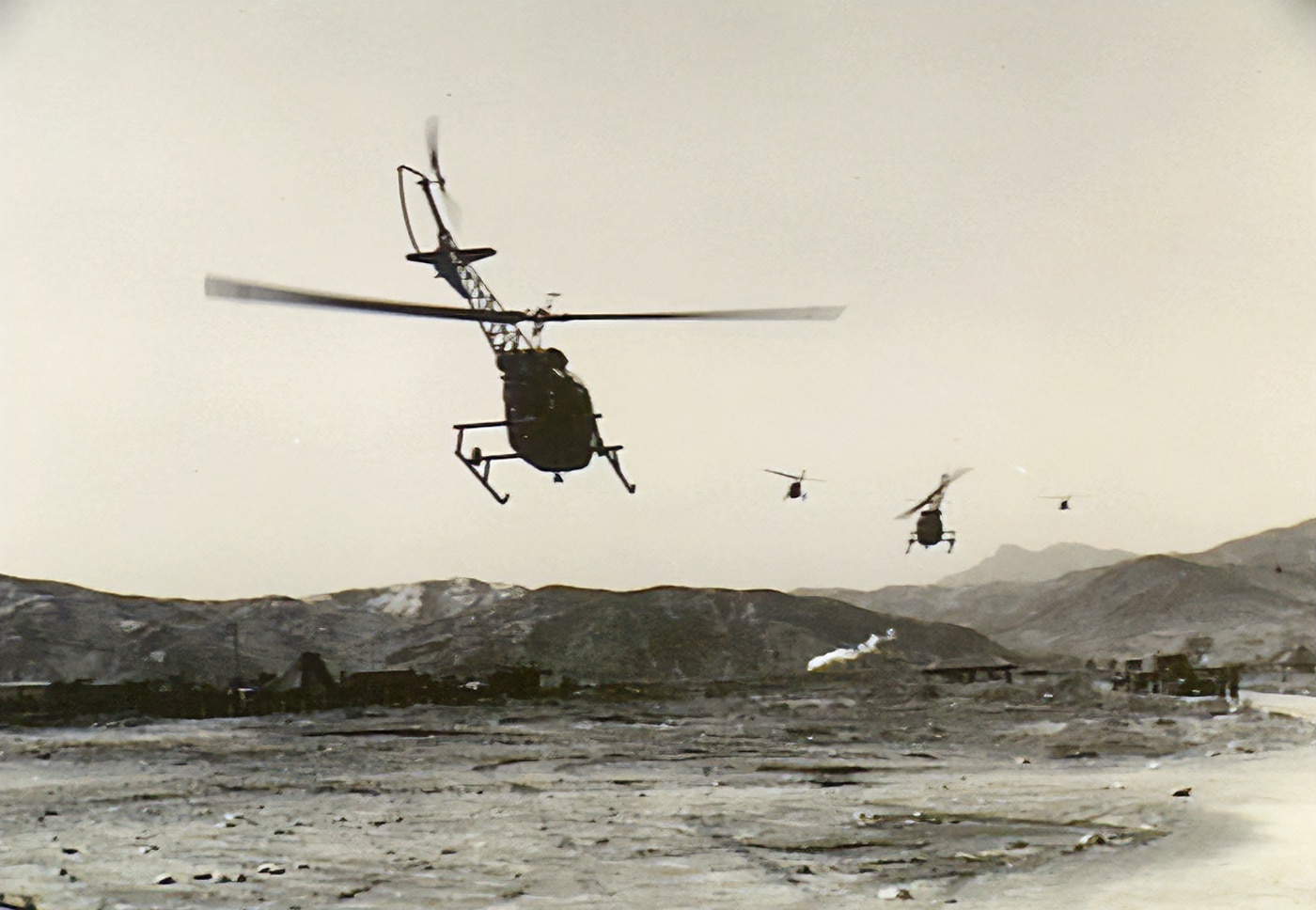
There’s a classic aviation geek t-shirt that reads, “Helicopters Don’t Really Fly. They Just Beat the Air into Submission.” There’s a certain undeniable modicum of truth to that.
Back when Igor Sikorsky was building the world’s first practical rotorcraft, the airplanes of the day were sleek, sexy, powerful and cool. By contrast, Sikorsky’s ride, the pioneering amphibious 1930s-vintage VS-300, looked like a big silver pregnant hippopotamus. The aesthetics of early rotary-wing flight did not get much better for quite a while.
In the Beginning…
First flown in 1942, the subsequent Sikorsky R-4 was the first mass-produced military helicopter. Consisting primarily of a tubular metal fuselage covered in doped fabric, the R-4 was notoriously difficult to fly. There was no governor on the engine, so pilots had to manually adjust engine power when making adjustments to the collective control. Additionally, the rotors were constructed of wood ribs built around a steel spar, all covered in fabric. The resulting whirling contraption was impossible to keep balanced.
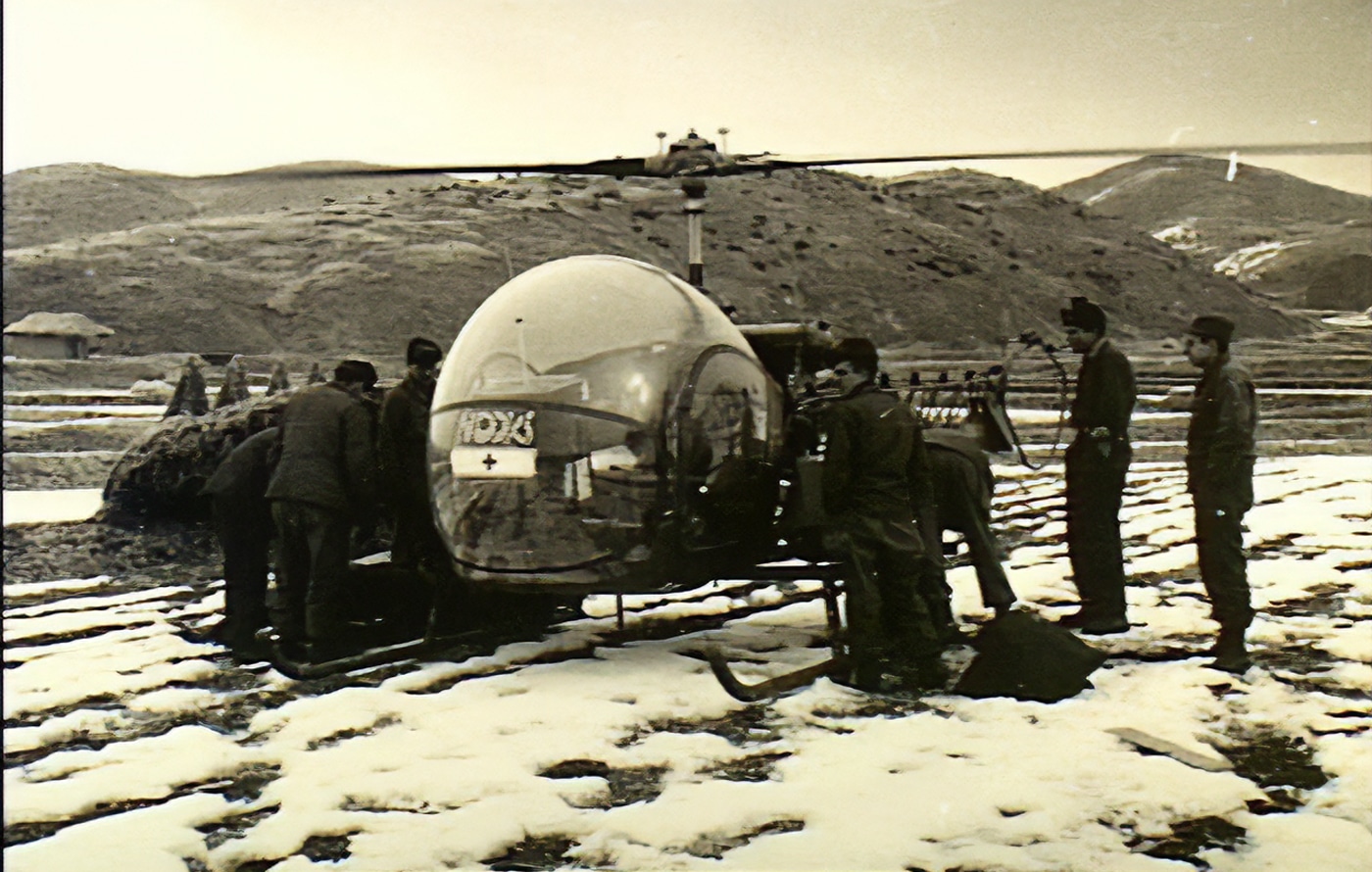
After experiencing one of these machines up close, a reporter for the Chicago Tribune opined, “The control stick shakes like a jackhammer, and the pilot must hold it tightly at all times. Should he relax for even a minute the plane falls out of control. Pilots of regular planes say it’s easy to identify a helicopter pilot — he has a permanent case of the shakes.”
The R-4 did a little practical rescue and reconnaissance work during World War II, but not a lot. The design just wasn’t quite ready for prime time. America’s first truly practical helicopter was the Bell H-13.
Technical Details
First flown in 1945, the Bell H-13 still wasn’t much of a flying machine. Based on the Bell model 47, the fuselage and tail boom were constructed from simple welded tube stock. The two symmetrical fuel tanks rode on the outside up high, and the aircraft rested on a pair of bent tubular skids. The two-bladed main rotor also included a smaller pair of short inertial stabilizing blades set 90 degrees out from the main blades. While this system still seemed rickety, it was nonetheless relatively smooth and reliable in service.
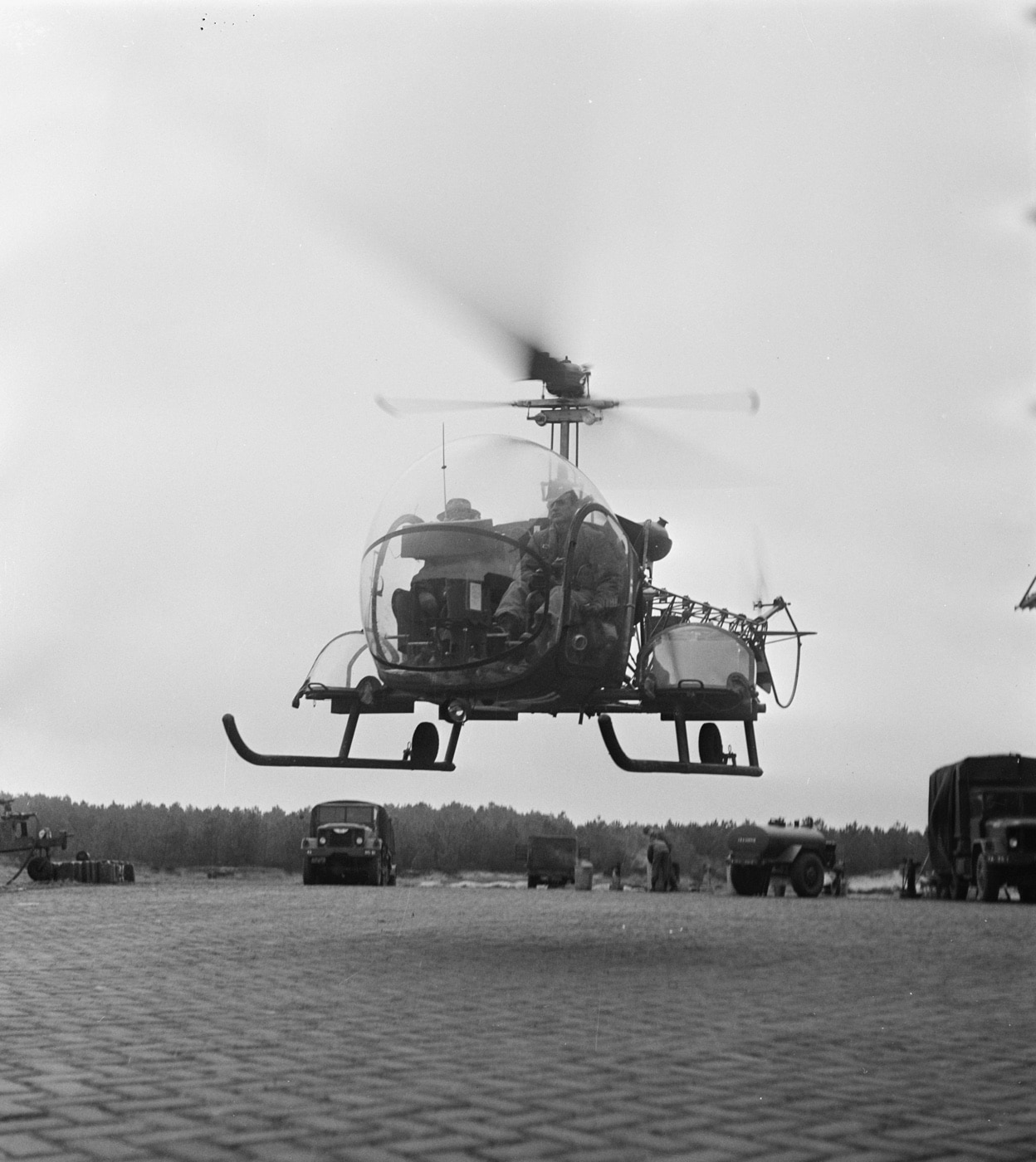
The CH-47D Chinooks that I flew sported a pair of Lycoming turboshaft engines capable of producing an aggregate 9,000 shaft horsepower. By contrast, the H-13 was powered by a single six-cylinder, horizontally-opposed Lycoming TVO-435-A1A internal combustion engine producing some 260 hp.
The aircraft carried a crew of three underneath a distinctive “soap bubble” blown plexiglass canopy. This bulbous canopy became the H-13’s most distinctive feature.
Seeds of Greatness as an Observation Helicopter
The production H-13 light helicopter cruised at 84 mph and had a max gross weight of less than 3,000 pounds. However, that was enough. With this as a basis, enterprising American G.I.s did some of the most amazing things with this delicate ungainly bird.
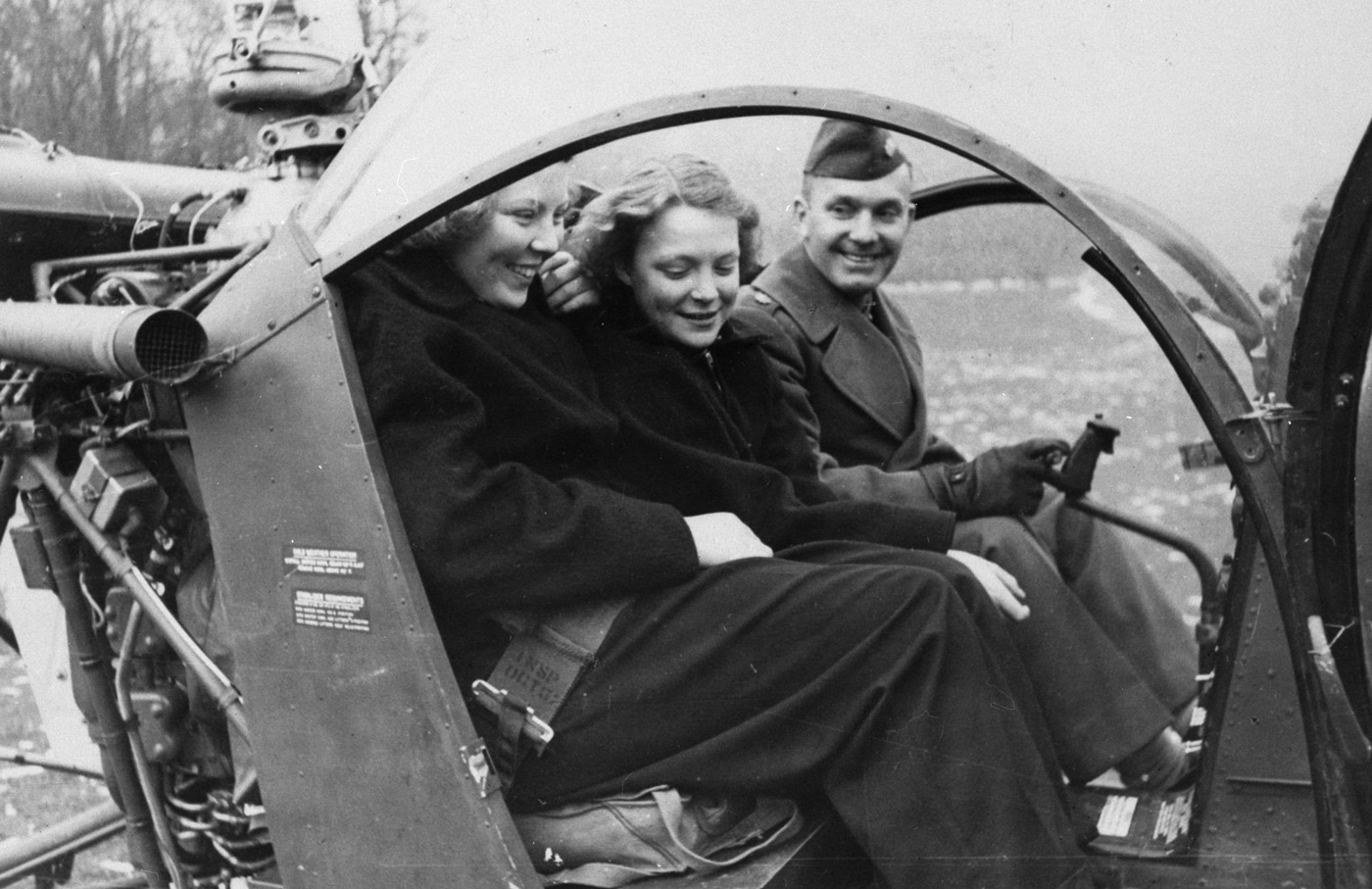
The primary mission of the H-13 in the days before ubiquitous drones and satellite imagery was tactical observation and intelligence gathering. The capacity to take-off and land vertically from austere locations while using terrain to mask from the enemy was a game changer on the battlefield. However, its use as an observation helicopter was just the beginning.
AH-13 Gunship
There was even an early gunship version of the aircraft called the AH-13 (also known as the AH.1). This spindly rascal incorporated a pair of Browning M1919 or M-60 .30-cal. machineguns mounted to fire forward along the aircraft’s axis.
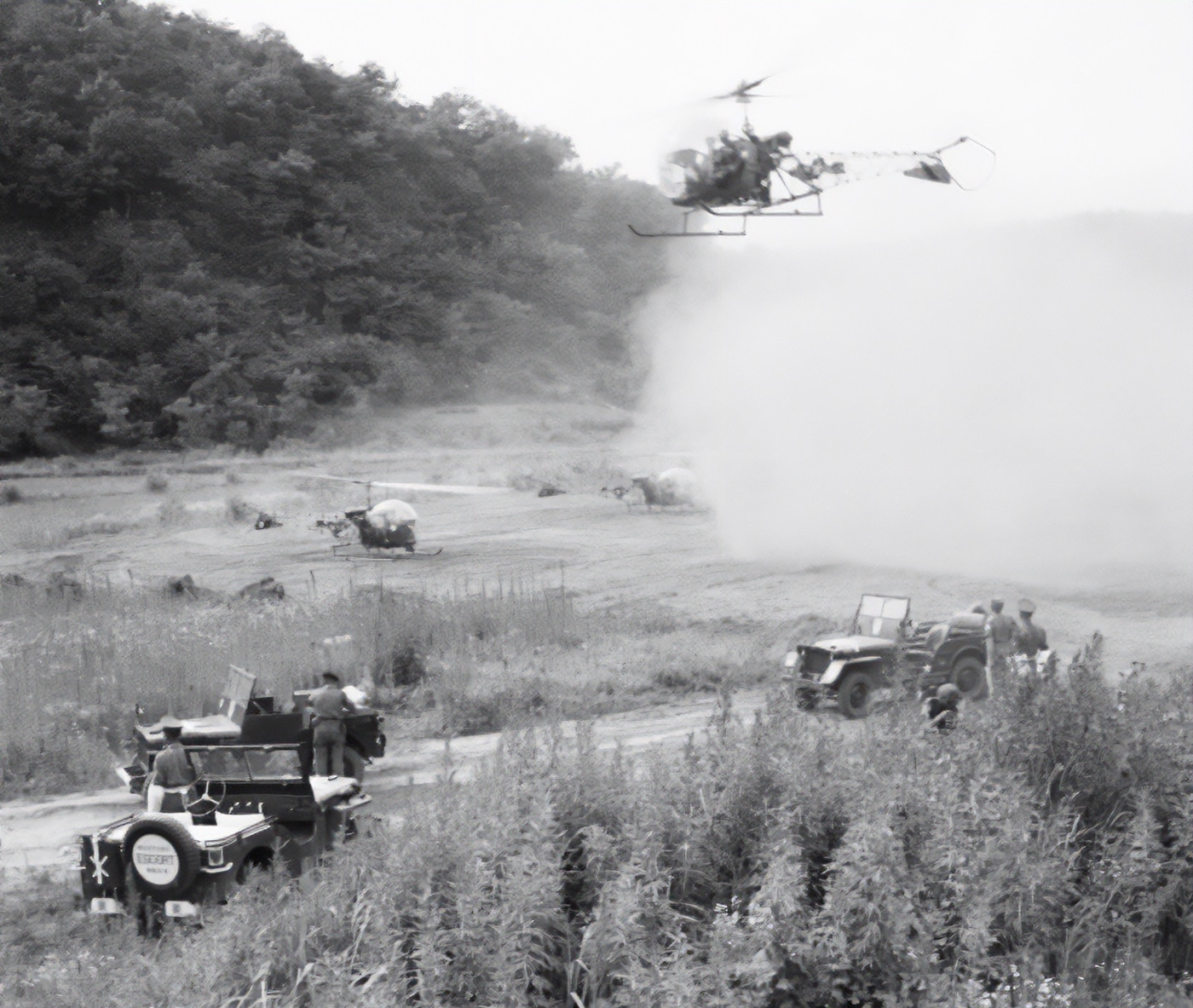
While the modest payload kept the AH-13 from making much of a splash at the time, it was the direct predecessor to the U.S. Army’s AH-1 Cobra. The Snake changed most everything about the art of raining down aerial pain from helicopters.
The AH-13 prototypes featured a slimmer redesigned cockpit. However, something similar showed up in the classic 1967 James Bond movie You Only Live Twice. You can see four of these SPECTRE H-13 gunships in action chasing 007 across the skies above Japan in his gyrocopter here.
The Real Game Changer
Those pioneering recon and attack missions were indeed sexy cool during the Korean War. However, where the H-13 really left its mark was in the burgeoning world of medevac. If you can get a wounded soldier to a hospital facility within an hour of his being injured, the probability that he will live to see his family again skyrockets. Evacuating wounded soldiers directly from the battlefield to the field hospitals via helicopter utterly transformed the tactical landscape.
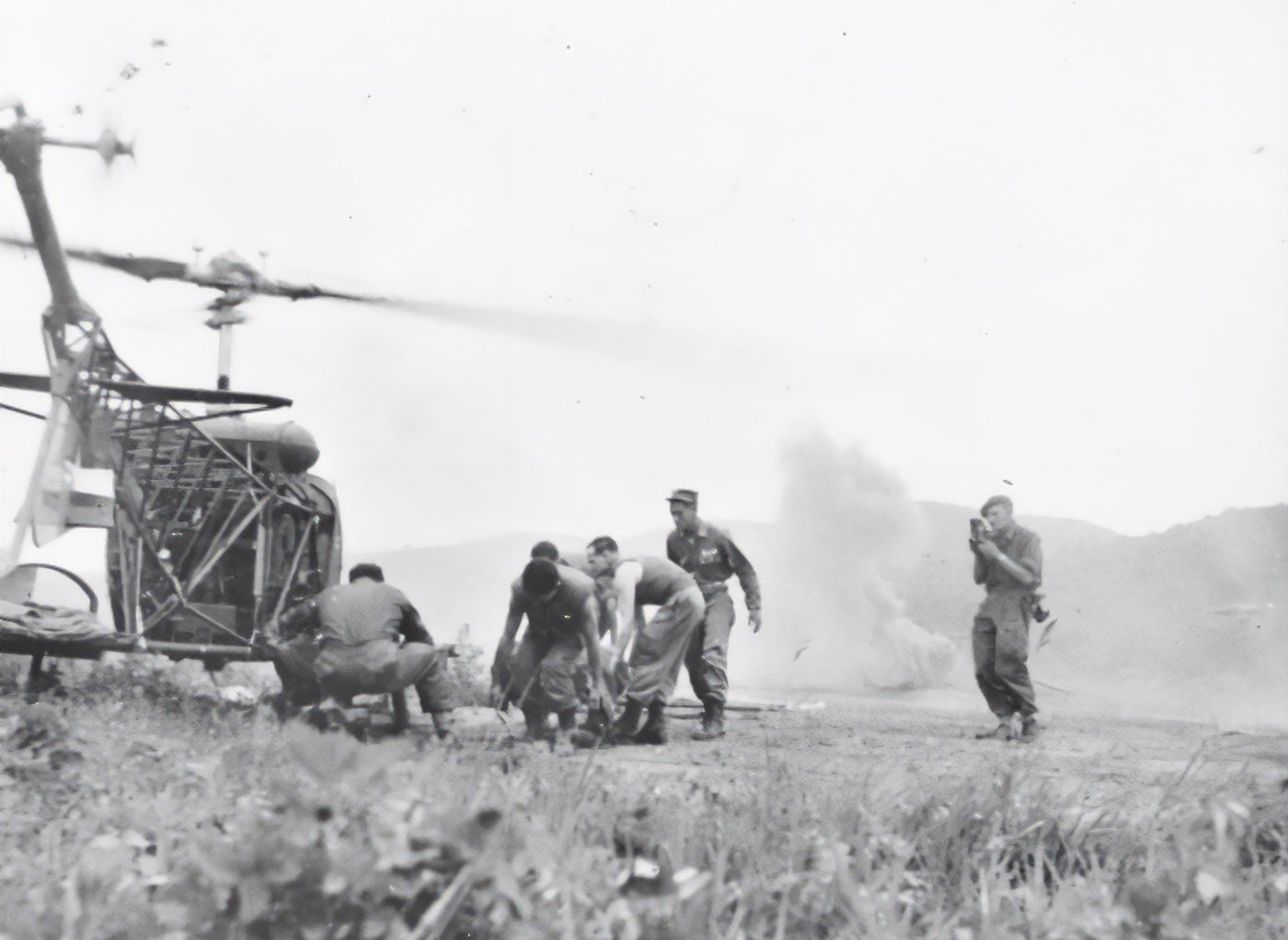
H-13 helicopters configured for medevac typically included panniers atop each skid to accept casualties on litters. They were equipped with an acrylic shield that enclosed the casualty’s head to protect him from the wind. There was no way these injured troops could be attended in flight and it was likely a pretty wild ride, particularly in sketchy weather. However, this austere medevac aircraft saved countless lives. It also led to much greater things down the road.
Screen Stars — The MASH Helicopter
First released in 1972, the hit TV show M*A*S*H spawned from a 1970 antiwar film of the same name. The movie was based upon a 1968 novel by Richard Hooker titled MASH: A Novel About Three Army Doctors. The TV show M*A*S*H ran for 11 seasons and was one of the most popular programs in the history of the medium.
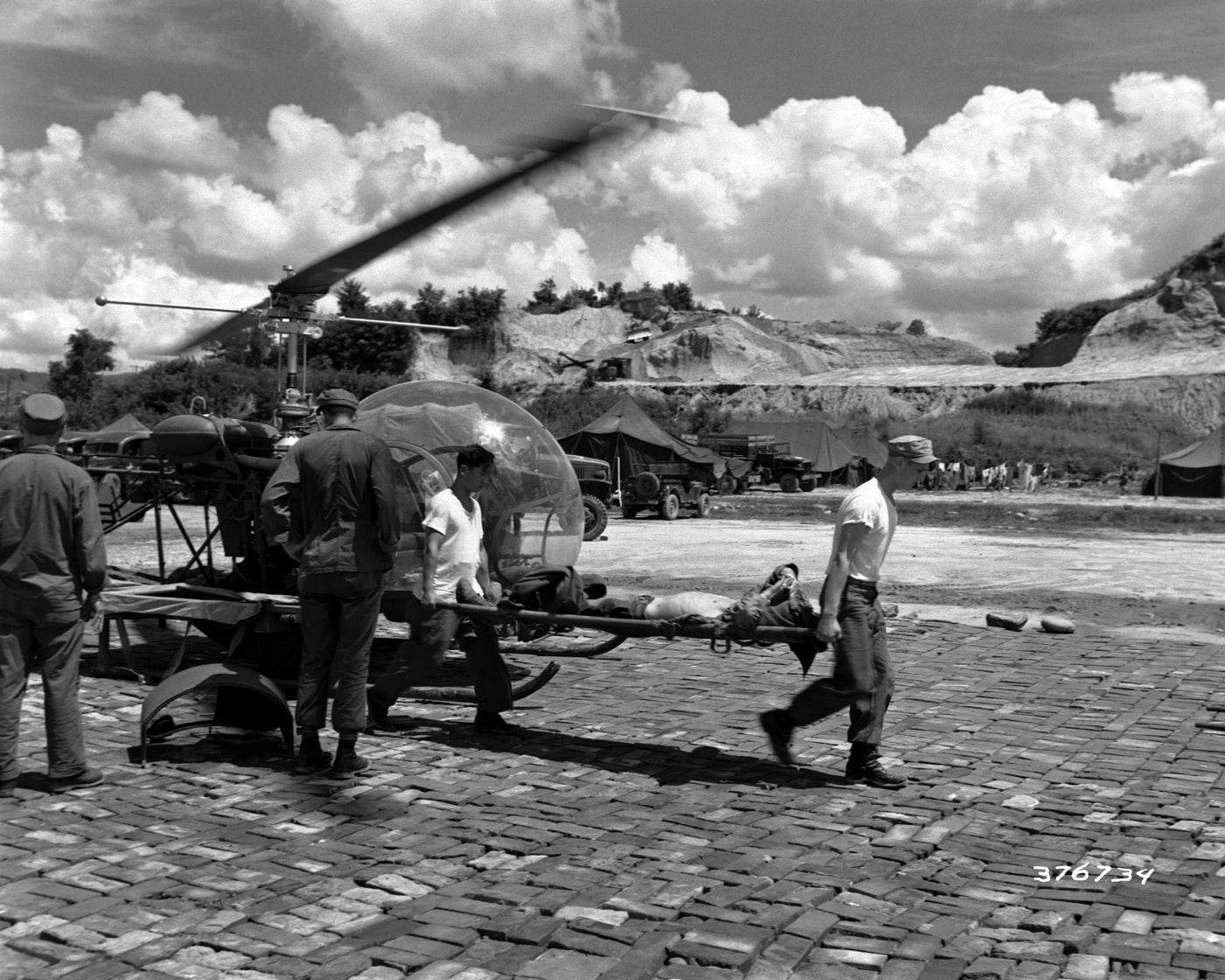
Integral to the show and anchoring the iconic opening scene was the H-13 medevac helicopter flying wounded into the field hospital for treatment. The distinctive sound of the aircraft was a recurring plot device. M*A*S*H made the H-13 one of the most recognizable helicopters in the world.
Ruminations on the H-13 Sioux Helicopter
Most all modern military rotary-wing aviation really can trace its lineage back to this simple bulbous Bell helicopter.
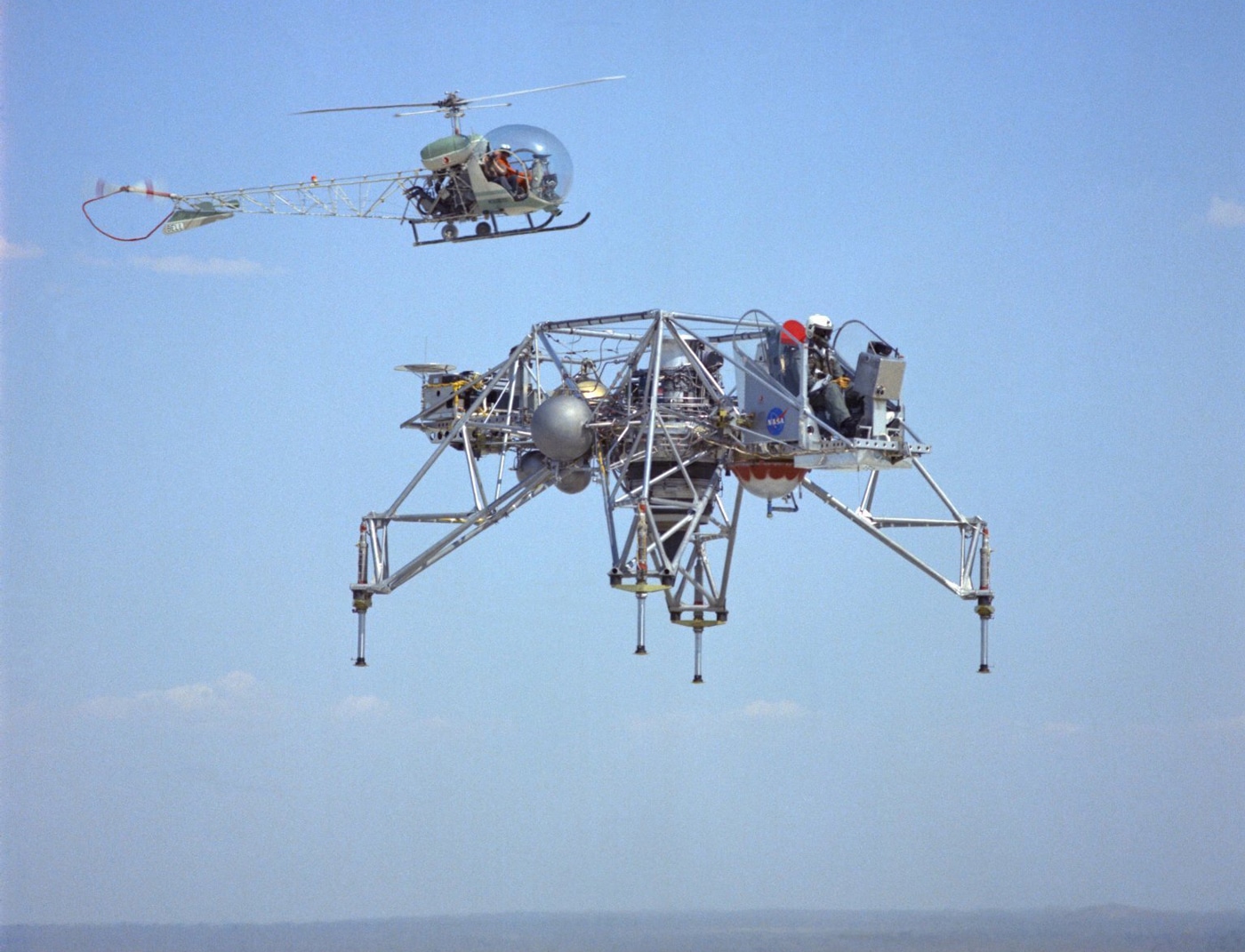
The H-13 was even used as an aeroscout platform early in the Vietnam War before being supplanted by the legendary OH-6 Loach. Additionally, the civilian version of the aircraft, the Bell 47, carried passengers, fought fires, searched for lost children and sprayed crops for decades. In fact, I saw a vintage airworthy Bell 47 for sale on an aviation website just within the last month or so.
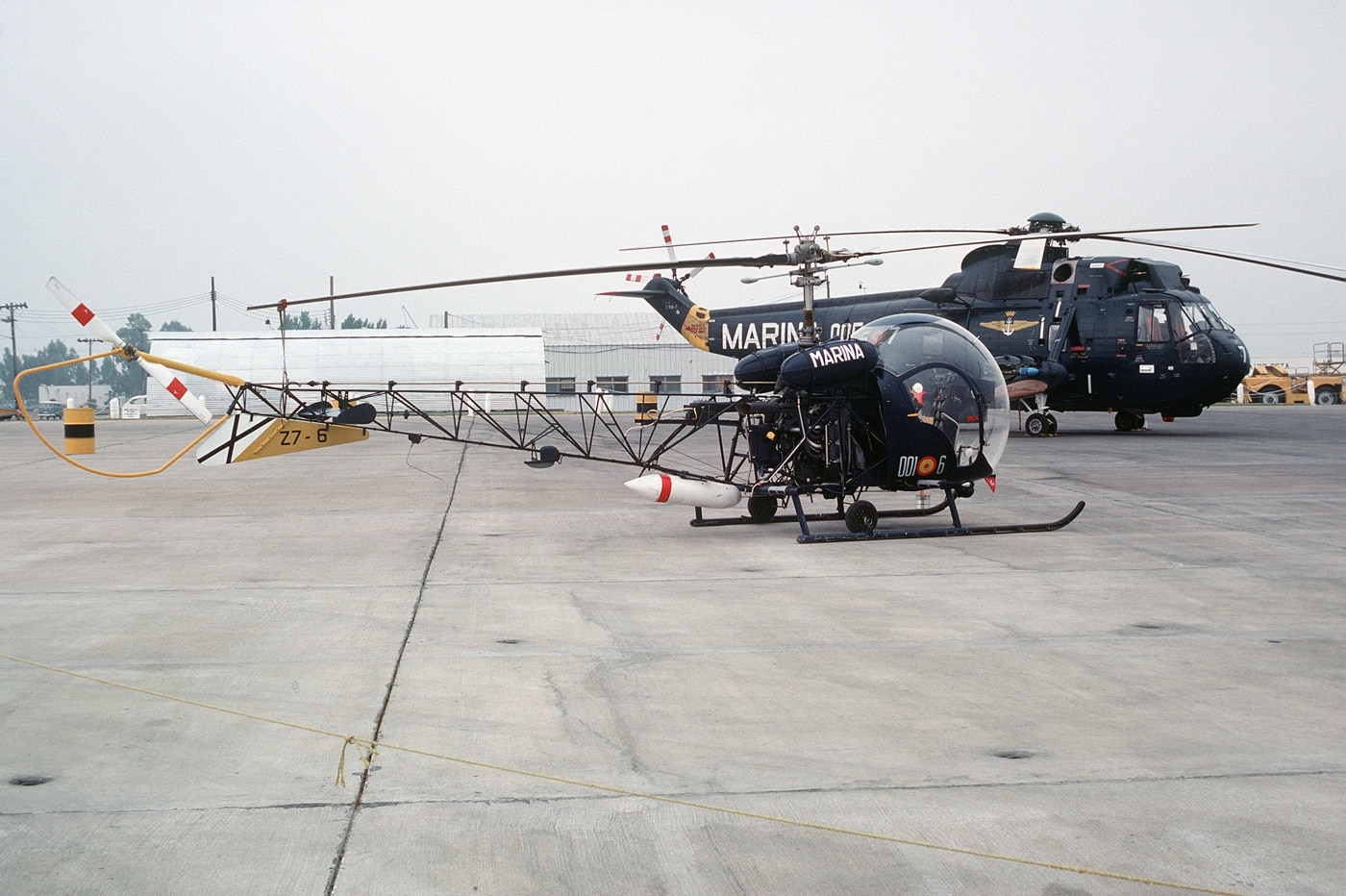
Ungainly, simple, and woefully underpowered yet profoundly versatile, the H-13 laid the foundation for absolutely everything else.
Editor’s Note: Please be sure to check out The Armory Life Forum, where you can comment about our daily articles, as well as just talk guns and gear. Click the “Go To Forum Thread” link below to jump in and discuss this article and much more!
Join the Discussion
Continue Reading
Did you enjoy this article?

 124
124






